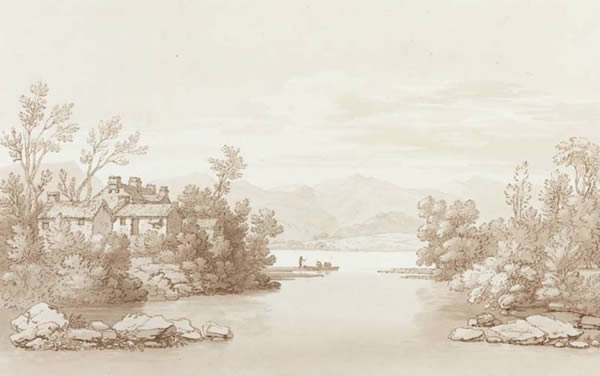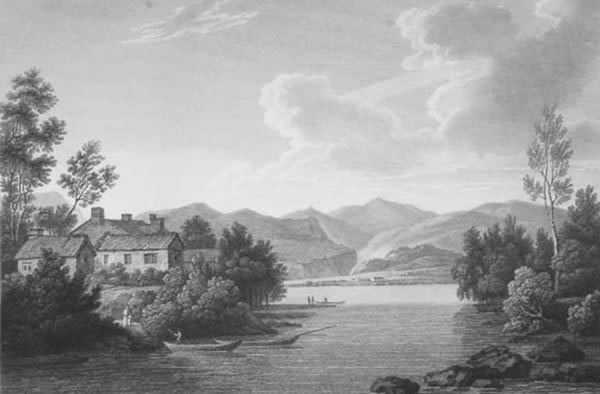Gray's Journal Entry: ‘Two miles further bring us to the little village of Pooley, pleasantly situated at the foot of Ulswater, and having, besides the embellishments of wood and water, a great accession of beauty from Dunmallard Hill, so called from the great resort of wild fowl thither from the lake. With this hill the village is connected by a neat bridge over the Emond, whence the annexed view of Ulswater has been taken. In the foreground on the left appears part of the village of Pooley, already mentioned, where there is a commodious little inn, much frequented by anglers as well as visitors of the lake itself: boats may here be obtained for navigating Ulswater, with guides, and cannon and ammunition for awakening the loud echoes from the surrounding hills. The mountain immediately behind the village is called Barton Park, beyond which arised Martindale Fell; and further on, the craggy rock of Hallin Hag. At the foot of these flows the first reach of the lake.’ |

